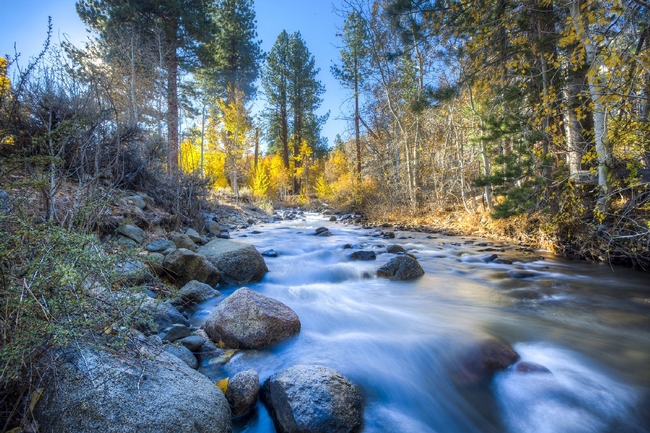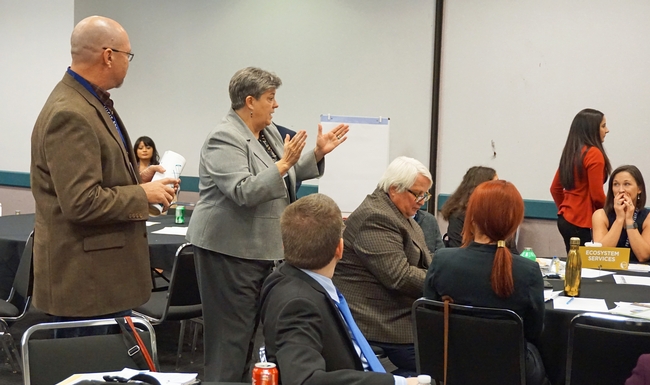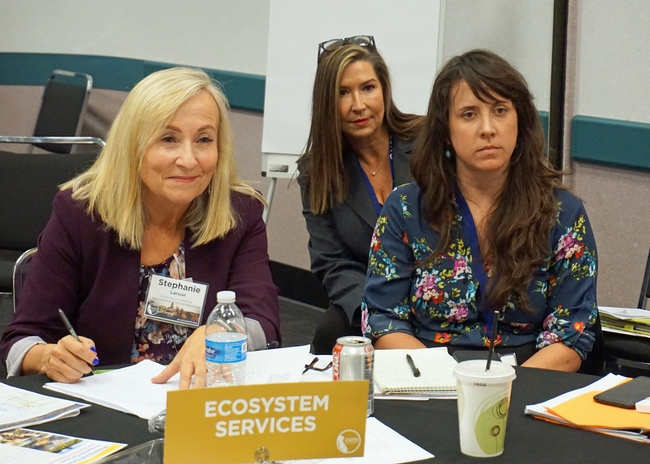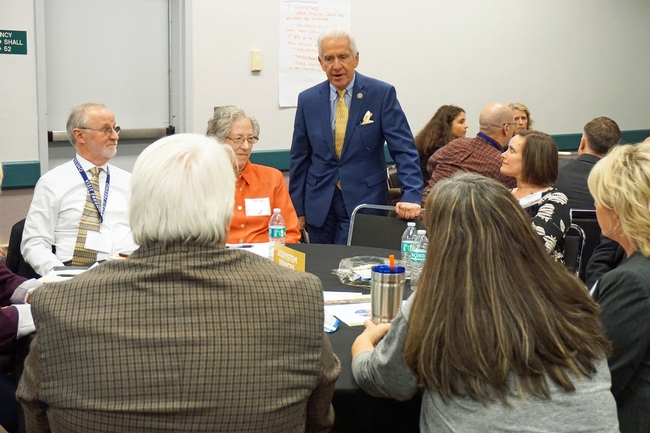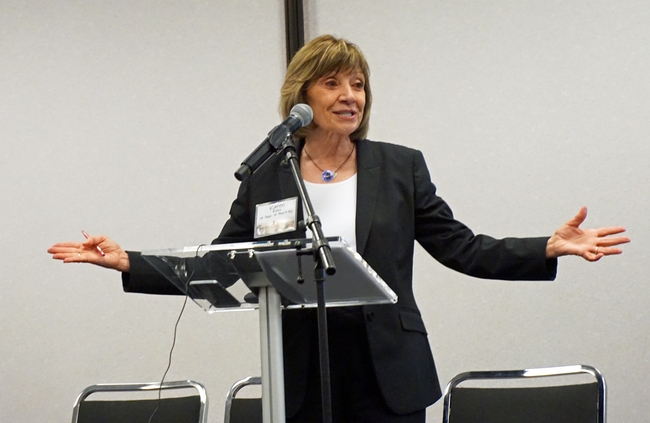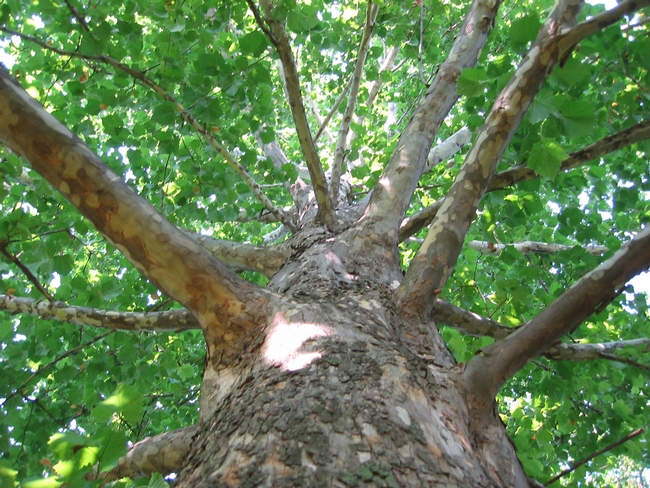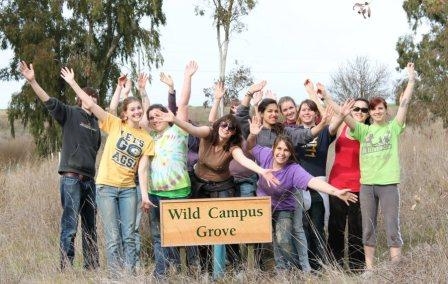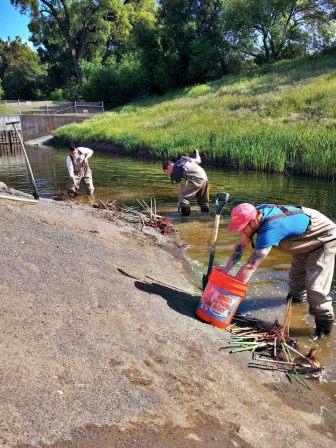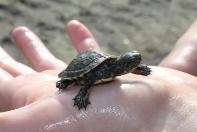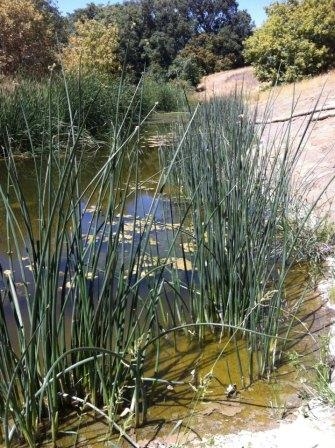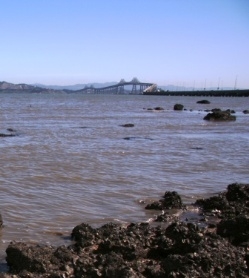Posts Tagged: ecosystem
To protect California ecosystem services, they must be valued
The ecosystem services of landscapes in California are essential to the state's future, but many people take them for granted.
In addition to direct economic outputs, working landscapes – farms, rangelands, forests and fisheries, to name a few – sequester carbon, capture water, support wildlife, offer picturesque views and make space for hiking, skiing, boating and other recreational activities.
“We need to put a value to ecosystem services, from an economic standpoint, that incentivizes people who own and manage these landscapes so they can continue to manage them for everyone's benefit,” said Stephanie Larson, UC Cooperative Extension rangeland advisor in Sonoma County.
When ecosystem services have been monetized, proper compensation can be calculated, ensuring benefits like clean water, fresh air and a livable climate are protected for future generations.
In November, UC Agriculture and Natural Resources released a report at the California Economic Summit in Fresno on the value of California's working landscapes. The report determined the state's working landscapes generate $333 billion in annual sales and 1.5 million jobs. That number does not include ecosystem services.
“The value of ecosystem services is probably higher than the $333 billion direct economic contribution of working landscapes outlined in the report,” said Glenda Humiston, University of California vice president for agriculture and natural resources. Humiston is chair of the economic summit's working landscape task force. “The problem is, when we don't have that quantified, it's hard to make investments to make sure those ecosystem services are maintained.”
Humiston said that, in time, systems can be developed for the public to support the ecosystem services they enjoy.
“You might have a small surcharge on binoculars,” she said. “That money could be used to protect bird habitat so birders can go somewhere to see birds. Water districts might assess a surcharge on your water bill to pay for the forested watersheds where they are getting your water. There are many different mechanisms to do this. We're trying to figure out what would be the best mechanism.”
During the summit, a team of researchers, policymakers and industry professionals launched a new phase of work to calculate with scientific accuracy the value of ecosystem services. Larson is a member of the leadership team, along with executive director of the Central Valley Partnership Dan O'Connell and Sequoia Riverlands Trust director of pubic planning and policy Adam Livingston.
The team is working with partners to secure funding and technical support to integrate data sets already available from the Council of Governments' Rural-Urban Connections Strategy into an open source, statewide system for mapping ecosystem services.
Once the tool is established, the team will be ready to pilot test it in four areas of California that provide ecosystem services.
“I love this concept,” said Kenny Spain, economic development specialist with the Headwaters Fund in Humboldt County and a member of the task force. “It's a valuable tool.”
Learn more:
View a 4-minute video of UC ANR vice president Glenda Humiston announcing the release of the report, California's Working Landscape: A Key Contributor to the State's Economic Vitality, at the 2019 California Economic Summit.
View California Governor Gavin Newsom's keynote address at the 2019 California Economic Summit:
Loss of trees could portend loss of human life
An invasive pest from Asia is killing thousands of trees in Southern California, which may lead to the death of thousands of humans, reported Adam Rogers on Wired.com.
Polyphagous shot hole borer females drill holes inside trees to lay their eggs. In the process, they deposit a fungus that grows and provides food for larvae. The fungus gums up the trees' channels for water and nutrient transport, eventually killing it. Called Fusarium dieback, the condition is on track to kill 26.8 million trees across Southern California in the next few years.
With data from a U.S. Forest Services study, which found that fewer trees is related to respiratory and cardiovascular disease deaths in people, the reporter underscored the dire human-health implications of polyphagous shot hole borer.
Trees also provide valuable "ecosystem services," such as reducing light and heat intensity, protecting water, cleaning the air of pollutants, providing wildlife habitat and storing carbon. The forest service combined satellite data and field plot data to calculate the costs and benefits of trees. The potential loss of ecosystem services because of polyphagous shot hole borer is $1.4 billion, not including the public health cost.
“A normal response to an invasive pest means millions of dollars would be thrown at it,” said John Kabashima, UC Cooperative Extension advisor emeritus who is working on staving off a catastrophe. “This one has received hundreds of thousands.”
Kabashima and other scientists are identifying infected trees to cut them down and chip the wood to prevent further spread. The tell-tale signs are little holes and sugar volcanoes that tend to show up first on the north side of the trunk or limb.
"You have to get out and walk around each tree, which we're doing in Orange County parks," Kabashima said. "We go out on off-road Segways. We can cover square miles in a day."
A Push to Protect Pollinators
A United Nations' organization today issued a global pollinator health report and the news was not good. The two-year global assessment by the...
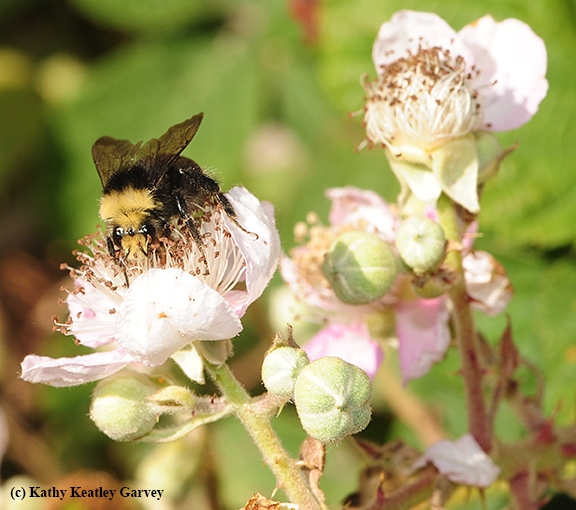
A yellow-faced bumble bee, Bombus vosnesenskii, foraging on a blackberry blossom. (Photo by KathY Keatley Garvey)
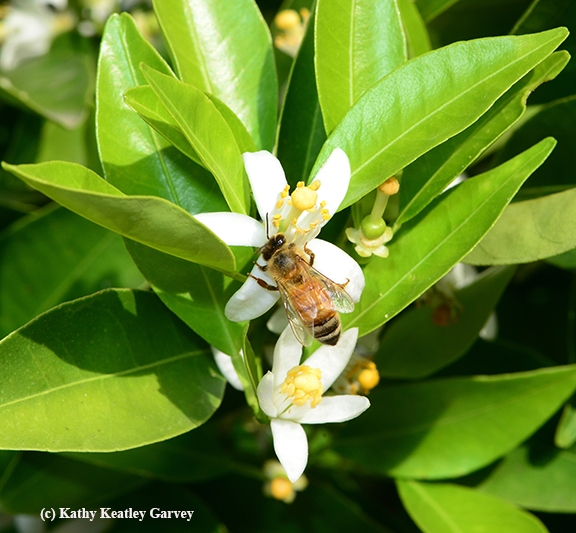
A honey bee pollinating a tangerine blossom. (Photo by Kathy Keatley Garvey)
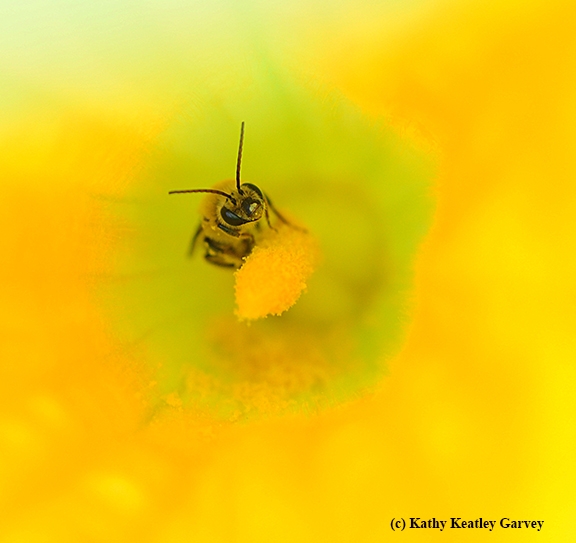
A squash bee, Peponapis pruinosa, pollinating a squash blossom. (Photo by Kathy Keatley Garvey)
College students create wildlife habitats in a Wild Campus program
Put together a group of hard-working, do-good college students who care about environmental issues, and you end up with a really “Wild Campus.” At UC Davis, students formed the student-run Wild Campus organization two years ago to conserve wildlife in the greater UC Davis area.
Working with campus experts (such as faculty and staff in the Department of Wildlife, Fish and Conservation Biology) and local environmental and conservation organizations, the volunteer students are improving the habitats for local wildlife and engaging the public in hands-on activities.
This is an extraordinary program that gives the students real-world environmental management skills, along with leadership opportunities and communications experience. Professor John Eadie, Department of Wildlife, Fish and Conservation Biology at UC Davis, said of the Wild Campus program, “Hands-on activity is a huge part of the educational experience.”
In the UC Davis Putah Creek Riparian Reserve, the students are establishing wildlife habitat areas and monitoring populations of amphibians, birds, fish, insects, mammals, and reptiles. They will record the changes over the course of time. Recent work in the riparian reserve (aka “the living classroom”) has included planting native oak seedlings, and installing tule plants to provide protection for the Western Pond Turtle, a species of concern.
A past project — Build a Wild Home Day — involved working with the UC Davis Arboretum on a successful public outreach program to build bird and bat boxes for installation on campus. (Great photos of this program are on the group’s Facebook page.)
The Wild Campus organization has a large cadre of eager and dedicated students who are improvising and making the most of limited resources. However, they are in need of donated field equipment (used equipment is fine) and financial contributions.
Visit the Wild Campus website and Facebook page for a feel-good look at what these ambitious students are doing to improve the environment, along with ways you can help them succeed.
Bodega Marine Lab keeps watch on ocean temperatures
Ocean waters are warming, sea level is rising, seawater is becoming more acidic, and shoreline erosion is intensifying. The world’s oceans are reacting to increased carbon dioxide and other greenhouse gases in the earth’s atmosphere.
“The physical and chemical environment of the ocean is changing with the climate,” said John Largier of the UC Davis Bodega Marine Laboratory. “This affects ecosystems — like tidal marshes and coral reefs that protect us from storms and flooding.”
The ocean brings stability to the earth’s climate. It heats up and cools down more slowly than the land and the air. With climate change, the ocean absorbs excess heat trapped in the earth’s system by the increased concentration of gases in the atmosphere.
As seawater warms, it expands. The increase in the ocean’s heat content has contributed to one of the most visible effects of global warming — rising sea level. Thermal expansion, along with melting polar ice caps and glaciers, has led to global sea level rise of more than seven inches over the last century.
“When the ocean begins to warm up, then you know that the earth’s climate is changing,” said Largier, a professor in the Department of Environmental Science and Policy. “Even if we stop putting greenhouse gases into the atmosphere right now, the ocean has warmed up, and it will take centuries for it to cool down. People don’t realize that we’ve already made a long-term commitment to climate change.”
At the Bodega Marine Lab, Largier and other scientists are studying the regional impacts of climate change on the waters off California, which include an increase in coastal upwelling. Driven by winds, upwelling pulls cold water and nutrients from the ocean depths to the surface along the shore and contributes to the “marine layer,” the blanket of cool moist air that moderates California temperatures. Largier’s research shows a trend toward stronger winds and an increase in upwelling since 1982, leading to cooler waters off central and northern California.
“Worldwide, the ocean’s surface water is getting warmer, but in California, the ocean is getting colder near shore,” said Largier. “This is intriguing because it shows that climate change is not going to have the same effect everywhere. There will be regional differences.”
This article was condensed slightly from UC Davis “CA&ES Outlook” magazine. Read the full article on page 7.
Read John Largier's scientific advisory group report on how changes in the ocean might affect two valuable marine sanctuaries off the northern California coast: "Climate Change Impacts: Gulf of the Farallones and Cordell Bank National Marine Sanctuaries"
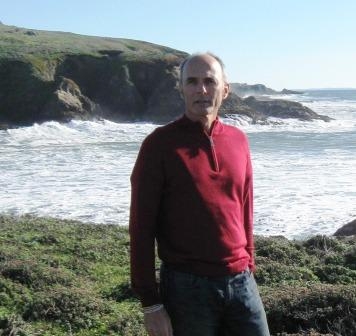
John Largier along the northern California coast. (Photo: Jennifer Sauter/UC Davis)


